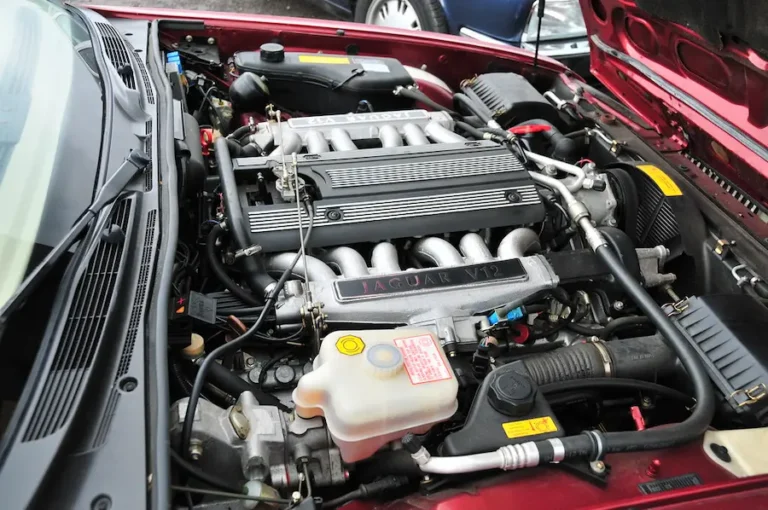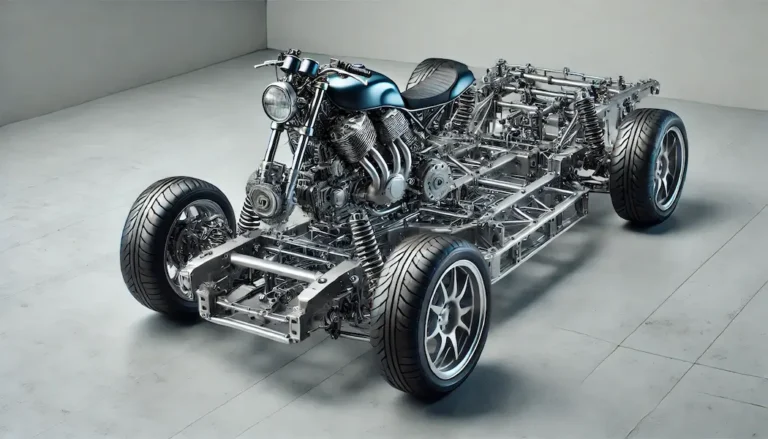BMW M60 Engine: Features and Specifications

Key Takeaways
- Design and Significance: The BMW M60 engine, introduced in the early 1990s, marked BMW’s return to V8 power, showcasing an all-aluminum construction and DOHC technology.
- Performance Specs: Available in two variants, the M60B30 (3.0L) and M60B40 (4.0L), the engine delivered impressive power for its time, with the larger variant producing up to 282 hp.
- Technical Innovations: Innovations like the Nikasil coating demonstrated BMW’s willingness to take risks, even though it came with some challenges.
- Common Issues: Known reliability concerns, such as cooling system failures and oil consumption, can be managed with regular maintenance.
- Legacy: The M60 engine set the stage for future BMW V8 engines, influencing designs that followed, and remains a favorite among enthusiasts.
Introduction to the BMW M60 Engine
The BMW M60 engine isn’t just about nuts and bolts—it’s about BMW rediscovering its mojo in the ’90s. After years of straight-six engines, BMW came back strong with this V8 powerhouse. For me, the M60 perfectly captures that sweet spot between brilliant engineering and sheer driving pleasure. Whether you’re a long-time BMW fan or just getting into the brand, the M60 offers a glimpse into a pivotal era that continues to shape BMW’s engines today.
Design and Engineering
All-Aluminum Construction
When BMW rolled out the M60, they weren’t just making an engine—they were setting the bar high. Going all-aluminum wasn’t just a move to shed some pounds; it was BMW telling the world, “This is how you build a modern engine.” The lighter weight didn’t just improve fuel efficiency; it made the car handle better, something you really appreciate when you’re behind the wheel. I’ve always admired how BMW balanced weight savings with durability in the M60, making it a true performer without cutting corners.
V8 Configuration
There’s something inherently thrilling about a V8 engine, and the M60’s configuration delivers that excitement in spades. Unlike the inline-six engines that BMW was known for, the M60’s V8 layout brought a new level of smoothness and power. It’s an engine that pulls strongly from low RPMs, offering a driving experience that’s both refined and exhilarating. I remember the first time I drove an M60-powered 540i—it was an experience that left a lasting impression. The way the engine urged the car forward was nothing short of addictive.
DOHC Technology
Double Overhead Camshaft (DOHC) technology was cutting-edge at the time, and the M60 used it to great effect. This tech allowed BMW to maximize airflow at high RPMs, boosting both power and efficiency. Driving an M60-powered car, you can feel the difference—it’s like the engine takes a deep breath before launching forward, delivering power in a way that feels almost effortless.
Performance Specifications
Power Output
The M60 didn’t just check the boxes—it blew them away. The M60B30 with its 215 hp and the M60B40 with a whopping 282 hp had power to spare, even by today’s standards. The first time I got behind the wheel of an M60-powered car, I was struck by how eager the engine was to rev and how smoothly it delivered that power. It’s an engine that feels alive, responding eagerly to every throttle input, making every drive an event.
Torque Figures
Torque is where the M60 really flexes its muscles. The M60B30 gives you a solid 214 lb-ft, and the M60B40 cranks it up to 295 lb-ft—numbers that were big in the ’90s and still hold their own today. This torque isn’t just for show; it’s there whenever you need it, whether you’re overtaking on the highway or powering out of a corner. It’s the kind of power that makes driving feel effortless yet exhilarating.
Acceleration and Top Speed
When it comes to real-world performance, the M60 does not disappoint. Cars equipped with the M60 engine, like the BMW 540i (E34), could accelerate from 0 to 60 mph in just over 6 seconds—a figure that still holds up well today. The acceleration isn’t just about speed; it’s about the confidence the engine inspires. You know you’ve got power on tap whenever you need it, and that makes for a driving experience that’s as thrilling as it is reassuring.
Technical Innovations
Nikasil Coating
One of the most talked-about features of the M60 engine is the Nikasil coating used on the cylinder liners. This technology was ahead of its time, providing a hard, durable surface that reduced wear and friction. However, this innovation came with its challenges, particularly in markets with high-sulfur fuel, which caused the coating to deteriorate. Despite these issues, I appreciate BMW’s willingness to experiment and innovate, even if it meant taking risks. This commitment to pushing the envelope is one of the reasons I admire the M60 engine.
VANOS System (Absence)
Interestingly, the M60 was one of the few BMW engines from this era that didn’t include the VANOS variable valve timing system. While some might see this as a drawback, I think it adds to the engine’s character. The absence of VANOS gives the M60 a more straightforward, mechanical feel—a purity that’s rare in today’s technology-laden engines. It’s an engine that relies on traditional engineering excellence rather than electronic aids, and that’s something I respect.
Fuel Efficiency and Emissions
Fuel Injection Technology
Fuel efficiency might not be the first thing that comes to mind when thinking about a V8 engine, but the M60’s Bosch Motronic 3.3 fuel injection system was designed to optimize both performance and economy. I’ve found that with careful driving, the M60 can deliver respectable fuel economy for a V8, averaging around 20 mpg in mixed driving conditions. It’s a testament to BMW’s engineering that they could create an engine that balances power and efficiency so effectively.
Emissions Control
In the early ’90s, emissions standards were becoming increasingly stringent, and the M60 was designed to meet these new regulations. Features like the three-way catalytic converter and oxygen sensors helped reduce emissions without compromising performance. Today, we take such technology for granted, but back then, BMW was leading the way in making powerful engines that were also environmentally responsible. It’s another reason why the M60 remains one of my favorite engines from this era.
Reliability and Common Issues
Cooling System Problems
Like any classic engine, the M60 has its quirks. Cooling system issues are pretty common—the plastic parts like the radiator and expansion tank tend to crack as they age. From my experience, staying on top of cooling system maintenance is crucial to keeping an M60 running smoothly. Regular inspections and timely replacements can prevent overheating issues and ensure the engine’s longevity.
Oil Consumption
Oil consumption is another aspect that owners need to be aware of. Some M60 engines tend to consume more oil than expected, often due to worn valve stem seals or piston rings. I’ve found that monitoring oil levels and using high-quality oil can mitigate this issue. It’s all part of the care and attention that these engines deserve.
Nikasil Liner Problems
As mentioned earlier, the Nikasil coating, while innovative, could lead to problems in regions with high-sulfur fuel. The good news is that many M60 engines have already been retrofitted with Alusil liners, which don’t suffer from the same issues. If you’re considering buying an M60-powered car, it’s worth checking whether this upgrade has been done. It’s a detail that can make a big difference in the engine’s long-term reliability.
Maintenance and Repair
Regular Maintenance Needs
Maintaining an M60 engine is all about consistency. Regular oil changes, coolant flushes, and timing chain inspections are essential to keep the engine in top condition. From my experience, these engines reward owners who stay on top of maintenance with reliability and performance that stands the test of time. It’s not just about following a schedule—it’s about understanding the needs of a finely-tuned machine.
Common Repairs
Over the years, certain repairs become part of the ownership experience. Valve cover gasket leaks, timing chain tensioner replacements, and cooling system overhauls are all common. While these repairs can be costly, I believe they’re worth the investment. After all, you’re not just maintaining an engine—you’re preserving a piece of BMW history. For those willing to put in the effort, the M60 offers a driving experience that’s hard to match.
Variants and Applications
M60B30 vs M60B40
The M60 engine came in two main variants: the M60B30 and the M60B40. The M60B30, with its 3.0-liter displacement, offers a more balanced approach, ideal for those who prioritize fuel efficiency without sacrificing too much power. On the other hand, the M60B40 is the engine for those who crave more performance, with its 4.0-liter displacement and higher horsepower. Personally, I’m partial to the M60B40—there’s just something about the way it delivers power that resonates with me. Whether you prefer the balance of the M60B30 or the muscle of the M60B40, both engines bring something unique to the table.
Usage in Non-BMW Vehicles
One of the fascinating aspects of the M60 engine is its adaptability. I’ve seen it used in everything from custom racing builds to off-road vehicles, a testament to its robust design and versatility. While BMW might not have intended for the M60 to power anything but their luxury sedans and coupes, the engine’s enduring popularity in the custom car community speaks volumes about its capability and appeal.
BMW M60 in Motorsport
Racing Applications
While not a racing engine by design, the M60 found its way into the motorsport world, particularly in touring car racing. Its strong power delivery and reliability made it a competitive choice in various racing series. Seeing the M60 in action on the track highlights its potential beyond the road—it’s an engine that thrives under pressure. If you’ve ever watched an M60-powered car tear up the track, you know just how capable this engine can be when pushed to its limits.
Performance Tuning
Tuning the M60 is where things get really interesting. Whether it’s a simple ECU remap or a full-blown turbocharging project, the M60 responds well to modifications. Personally, I’ve always admired the creativity and ingenuity of tuners who take this already capable engine and push it to new heights. There’s a certain satisfaction in knowing that an engine from the early ’90s can still be a serious performer with the right tweaks. If you’re considering tuning an M60, I highly recommend it—it’s a rewarding experience that brings out the best in this iconic engine.
Legacy and Impact on Future BMW Engines
Influence on Successor Engines
The M60 didn’t just lead the way for future V8s—it set the bar. The M62 that came after it took what was great about the M60 and made it even better, adding VANOS to boost efficiency and performance. The M60’s influence can still be felt in BMW’s modern V8s, which continue to blend power with sophistication. For me, the M60 is more than just a precursor to the M62—it’s the engine that redefined what a BMW V8 could be.
Collectibility and Enthusiast Appeal
Today, the M60 engine is cherished by collectors and enthusiasts alike. Cars equipped with the M60, particularly the 540i and 840Ci, are becoming increasingly sought after as modern classics. Owning one of these cars isn’t just about the driving experience—it’s about being part of a community that appreciates the engineering excellence and historical significance of the M60. If you’re in the market for a classic BMW, I wholeheartedly recommend seeking out an M60-powered model. It’s a choice you won’t regret.
Case Studies: Iconic BMW Models with M60 Engines
BMW 540i (E34)
The E34 540i is perhaps the quintessential M60-powered car. It combines BMW’s legendary chassis dynamics with the smooth, potent power of the M60B40. The first time I drove a 540i, I was struck by how effortlessly it combined luxury and performance. It’s a car that feels just as comfortable on a twisty backroad as it does on the autobahn. If you’re looking for a classic BMW that exemplifies the best of the brand, the 540i is an excellent choice.
BMW 740i/740iL (E32)
The E32 740i and 740iL were BMW’s flagship sedans in the early 1990s, and the M60B40 engine played a key role in their success. These models were known for their smooth ride, powerful engine, and luxurious interiors. The M60’s power and refinement made the 740i/740iL a popular choice among executives and luxury car buyers. If you’ve ever had the pleasure of driving one, you’ll understand why the M60 was the perfect match for BMW’s luxury sedan lineup.
BMW 840Ci (E31)
The BMW 840Ci was the grand tourer of the BMW lineup, and the M60B40 engine provided the perfect blend of power and sophistication. With its sleek design and potent V8, the 840Ci became an icon of 1990s automotive design. The M60 engine’s smooth power delivery made the 840Ci a joy to drive, whether on long highway cruises or winding mountain roads. For those who appreciate a car that combines style with substance, the 840Ci is a gem that deserves its place in any collection.
Conclusion
The BMW M60 engine is proof of how BMW nailed it in the early ’90s. With its mix of cutting-edge materials, clever design, and solid performance, the M60 set a new standard for luxury V8s. Despite some challenges, particularly with the Nikasil coating, the M60 remains a beloved engine among BMW enthusiasts and collectors. Its legacy is felt in the engines that followed and in the continued admiration of the cars it powered.
Frequently Asked Questions (FAQs)
What is the difference between the M60 and M62 engines?
The M62 engine is an evolution of the M60, featuring improvements such as the inclusion of VANOS (variable valve timing) and updated engine management systems. The M62 also addressed some of the reliability issues found in the M60.
How does the M60 compare to other V8 engines of its time?
The M60 was competitive with, if not superior to, other V8 engines of its era in terms of power, refinement, and technology. Its all-aluminum construction and DOHC design were ahead of many competitors.
What are the most common maintenance issues with the M60 engine?
Common issues include cooling system failures, oil consumption, and problems with the Nikasil-coated cylinder liners in certain markets. Regular maintenance and using the correct type of fuel can mitigate many of these issues.
Is the BMW M60 engine reliable for daily driving?
With proper maintenance, the M60 engine can be reliable for daily driving. However, potential owners should be aware of its common issues and be prepared for the maintenance costs associated with a high-performance engine.
Where can I find parts for the BMW M60 engine?
Parts for the M60 engine can be found through BMW dealerships, specialty parts suppliers, and online marketplaces. Enthusiast forums and communities are also valuable resources for locating rare or discontinued parts.
Thanks for checking out this article on EngineEcho.com! Hope you found this article: "BMW M60 Engine: Features and Specifications" helpful! If you liked it and want to dive into more car engine topics, head over to our homepage. There's always something new to discover in the world of engines. Enjoy your reading journey!
Check out our previous article: Understanding the Engine Temperature Coolant Sensor






